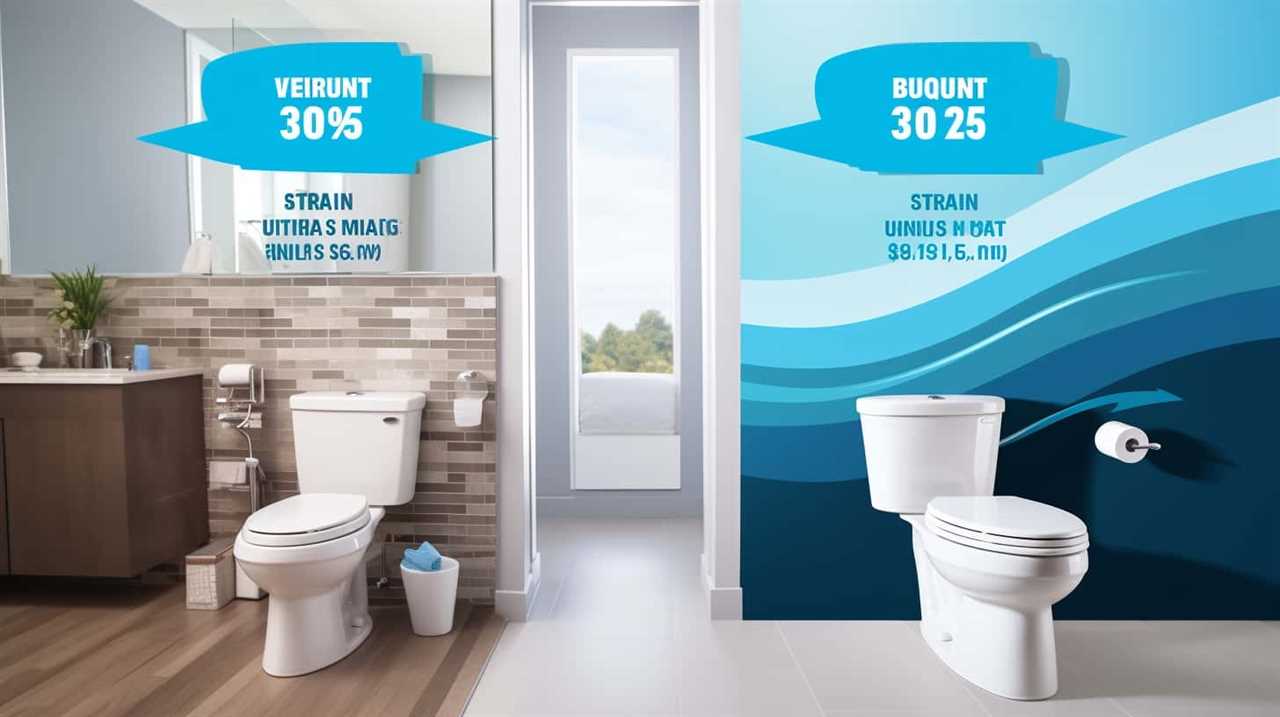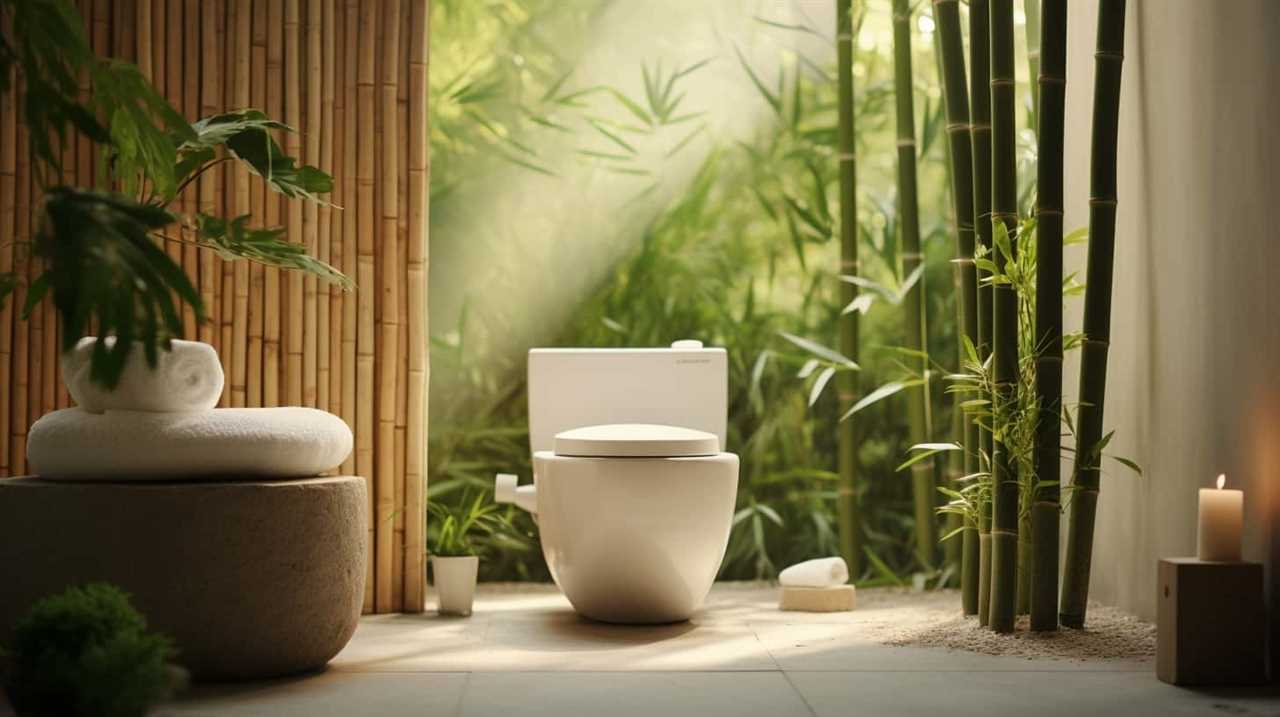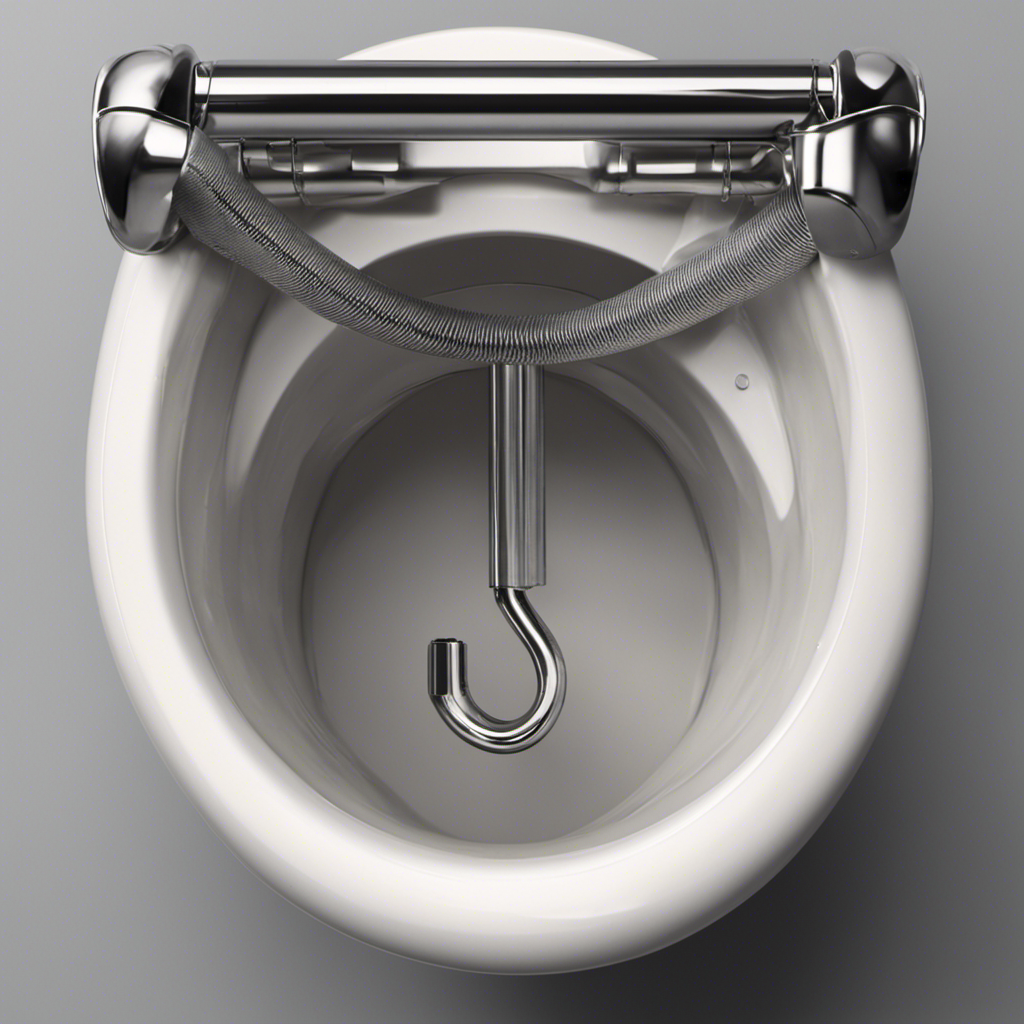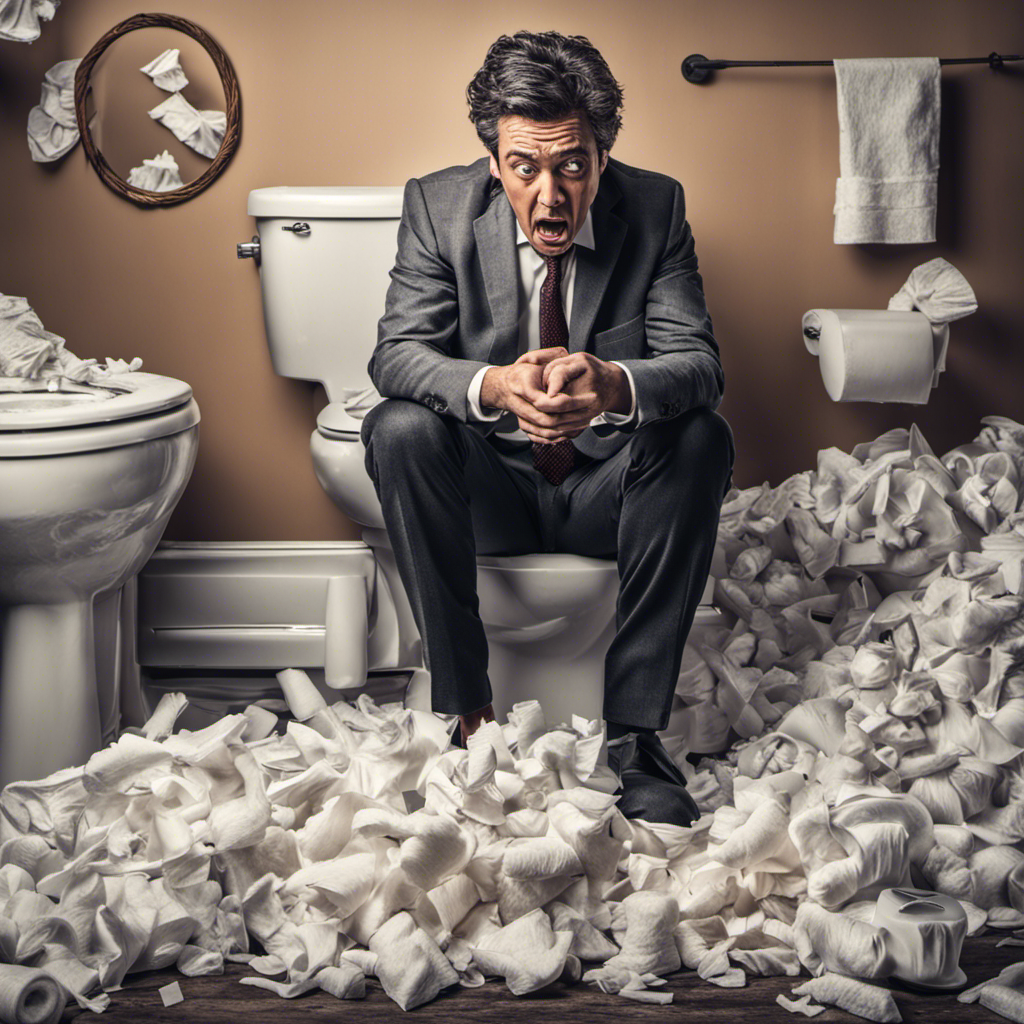Have you ever wondered why European toilets have two flush buttons?
Well, imagine a toilet that offers you the flexibility to control the amount of water used per flush, like a car with two gears.
In this article, we’ll explore the water conservation benefits, practicality, and environmental impact of this innovative design.
We’ll also delve into the different flush options and the global influence of this trend.

Get ready to dive into the fascinating world of European toilet technology.
Key Takeaways
- European toilets have two flush buttons to promote water conservation and efficiency.
- The dual-flush system offers a partial flush for liquid waste and a full flush for solid waste, reducing water consumption over time.
- The practicality and convenience of the dual-flush system enhance user experience, improve hygiene standards, and prevent the spread of diseases.
- The adoption of dual-flush toilets has global influence, encouraging water conservation efforts, promoting social equality, and stimulating economic benefits.
Water Conservation Benefits
One of the main reasons why European toilets have two flush buttons is because it allows for water conservation. This is achieved through the implementation of water saving techniques, specifically the use of dual flush systems.
Dual flush systems provide users with the option to select either a partial flush or a full flush, depending on their needs. The partial flush, typically indicated by a smaller button, is designed for liquid waste, using a reduced amount of water. On the other hand, the full flush, indicated by a larger button, is intended for solid waste and utilizes a higher volume of water.
Practicality and Convenience
Using two flush buttons on European toilets offers a more practical and convenient solution for users. The first button is designed for a smaller flush, which is ideal for liquid waste, while the second button is for a larger flush, suitable for solid waste. This dual-flush system allows users to select the appropriate flush based on their needs, resulting in water efficiency.

By using less water for liquid waste, European toilets reduce water consumption and contribute to environmental conservation efforts. Additionally, this design promotes convenience as it eliminates the need for multiple flushes or manual adjustments.
The two-button system is intuitive, easy to use, and enhances user experience. Furthermore, the sleek and modern design aesthetics of European toilets add an element of sophistication to any bathroom.
Environmental Impact
From an environmental perspective, we can see the impact of European toilets’ dual-flush system. This sustainable design feature promotes water efficiency by offering two different flush options, depending on the waste being disposed of. Here are four key points to consider:
- Water Conservation: The dual-flush system allows users to choose between a full flush for solid waste and a partial flush for liquid waste. This reduces the amount of water used per flush, leading to significant water savings over time.
- Cost Savings: By conserving water, dual-flush toilets help reduce water bills for households and businesses. This not only benefits the individual but also helps to alleviate stress on water resources.
- Environmental Protection: With increased water efficiency, dual-flush toilets contribute to the conservation of freshwater sources, which are becoming increasingly scarce globally. This helps to protect ecosystems and maintain a sustainable balance.
- Global Impact: The adoption of dual-flush toilets has the potential to make a significant impact on a global scale. With the growing awareness of water scarcity and the need for sustainable practices, this design choice can inspire other countries to follow suit.
Different Flush Options
Now, let’s delve into the different flush options available in European toilets, further exploring the benefits of this dual-flush system.

The dual-flush system is a design innovation that offers users the ability to choose between two flushing options based on their preference and the waste being disposed of. This system typically consists of two buttons or levers, one for a full flush and another for a half flush.
The full flush option is designed for solid waste removal, using a higher volume of water to ensure effective flushing. On the other hand, the half flush option uses a lower volume of water and is intended for liquid waste, thereby conserving water.
This user preference customization not only helps in maintaining hygiene but also promotes water conservation, making the dual-flush system an environmentally friendly choice.
Adoption and Global Influence
After implementing the dual-flush system, many European countries have witnessed the widespread adoption and global influence of this water-saving innovation. The success of this system can be attributed to its ability to cater to cultural preferences and adapt to existing plumbing infrastructure.

Here are some key reasons why the dual-flush system has gained popularity:
- Water Conservation: The dual-flush system allows users to choose between a full flush and a half flush, depending on their needs. This feature has significantly reduced water consumption in households and public facilities.
- Cost Savings: By using less water, households and businesses can save money on their water bills. This financial incentive has encouraged the adoption of dual-flush toilets in various regions around the world.
- Environmental Impact: The dual-flush system plays a crucial role in conserving water resources and reducing the strain on ecosystems. Its global influence has contributed to sustainable practices in water management.
- Retrofitting Convenience: The dual-flush system can easily be retrofitted into existing plumbing infrastructure, making it a practical and cost-effective choice for both new constructions and renovations.
The adoption of dual-flush toilets worldwide showcases the positive impact that water-saving innovations can have on our environment and society.
Frequently Asked Questions
Are There Any Health Benefits Associated With Using Dual Flush Toilets?
There are health benefits associated with using dual flush toilets. They contribute to water conservation and have a positive environmental impact. They allow us to control the amount of water used for flushing, reducing water waste and promoting sustainability.
What Are Some Common Misconceptions About Dual Flush Toilets?
There are several misconceptions about dual flush toilets. Some believe they are complicated to use or that they don’t effectively clean the bowl. However, the benefits, such as water conservation, make them a worthwhile choice.
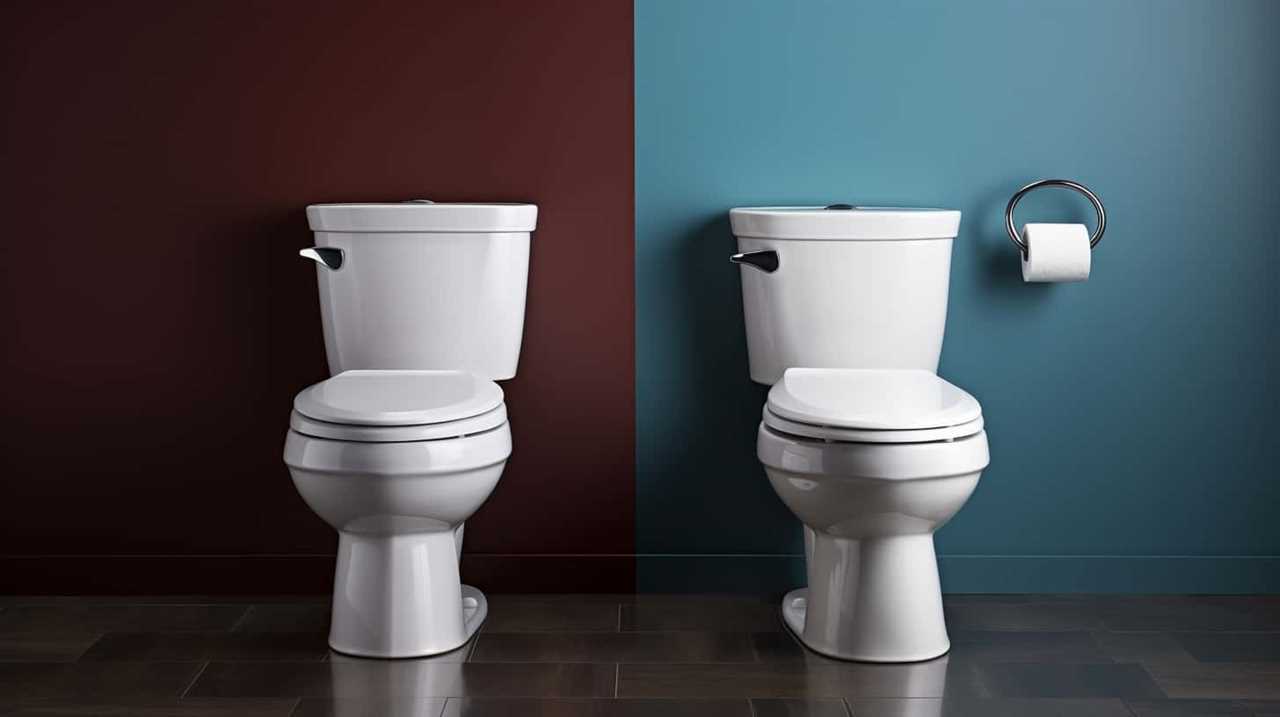
Are There Any Disadvantages to Using Dual Flush Toilets?
There are no disadvantages to using dual flush toilets. They offer numerous advantages, such as water efficiency, which contributes to environmental sustainability. This makes them an excellent choice for those seeking a more eco-friendly option.
How Do Dual Flush Toilets Work and What Is the Technology Behind Them?
Dual flush toilets work by providing two buttons or levers for different flush volumes. The smaller button flushes liquid waste while the larger button flushes solid waste. This technology allows for better water conservation and efficient cleaning of the toilet bowl.
What Are Some Alternative Water-Saving Measures That Can Be Implemented in Addition to Using Dual Flush Toilets?
Water efficient faucets and rainwater harvesting are two alternative water-saving measures. They can be implemented alongside dual flush toilets to further reduce water consumption. These measures contribute to environmental sustainability and promote water conservation.
Conclusion
In conclusion, the use of dual flush buttons in European toilets is a brilliant innovation that combines water conservation, practicality, and environmental impact.

This efficient design allows users to choose between a full flush for solid waste and a partial flush for liquid waste, reducing water usage by up to 50%.
As this eco-friendly trend continues to gain global influence, one can’t help but wonder what other ingenious inventions lie in store for the future of toilet technology.
